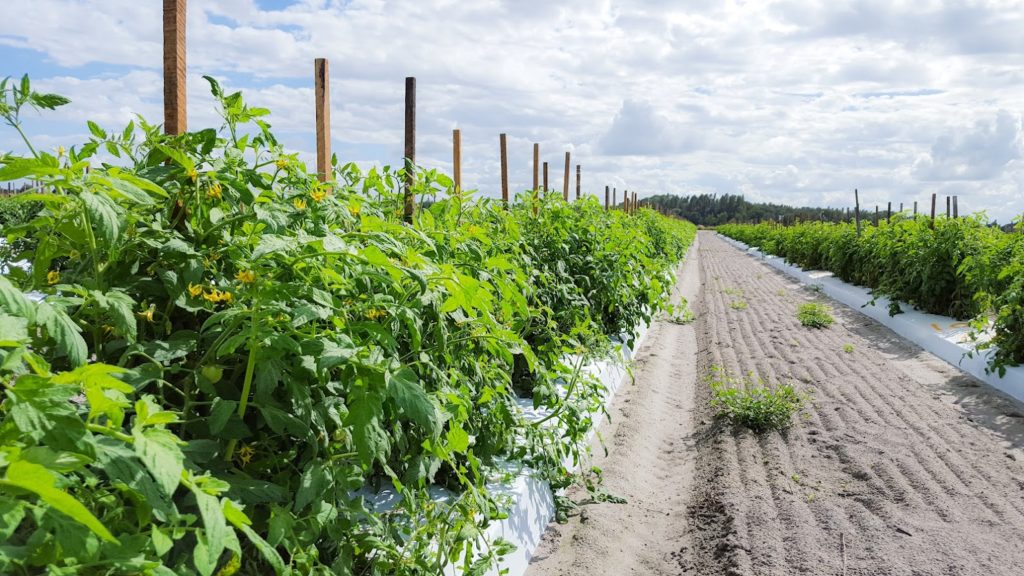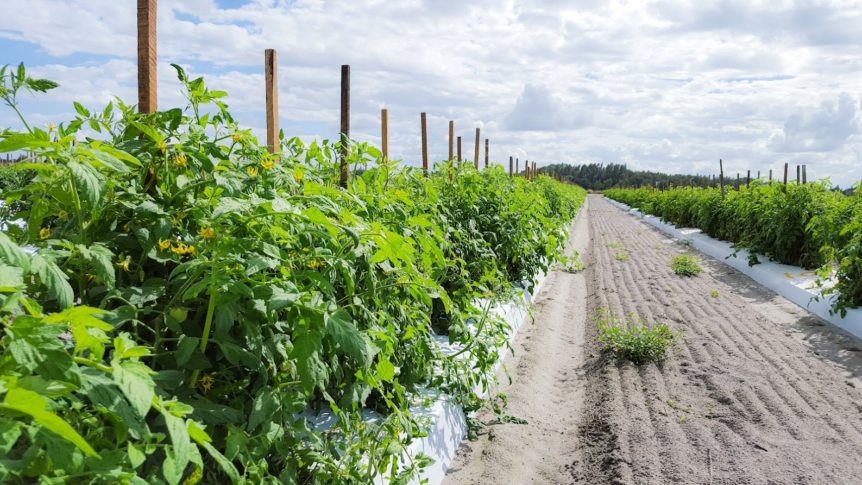
By Clint Thompson
Labor expenses are a costly input for Florida tomato producers and serve as a significant reason the industry is emphasizing research into automated harvesters.
Opinions vary on whether that dream ultimately becomes a reality, though University of Florida Institute of Food and Agricultural Sciences (UF/IFAS) tomato breeder Jessica Chitwood-Brown insists there are alternative ways for growers to reduce their labor needs.
“I think regardless of whether we make it to full mechanical harvesting, which I think is possible, but even if we don’t, there are things we can do to reduce the labor need. Ground tomatoes used to be the way tomatoes were grown in Florida, and they are the way they are grown in California,” said Chitwood-Brown, assistant professor of horticulture at the UF/IFAS Gulf Coast Research and Education Center in Wimauma, Florida.
“Staked culture didn’t come in until later when they realized that if they could get the plants off the bed, it would reduce disease and all of this stuff. At that point in time, labor was available, and you could pay for it, and it wasn’t that hard to get. That’s just not the case anymore.”
New Varieties Needed
If the industry pivots back to a ground-based planting approach, the UF/IFAS breeding program will need to breed varieties conducive to that system.
“If we need to go back to ground culture, we need varieties to withstand that. The old varieties are not going to make it. I think that’s one of the great things about the effort going on in this program. These varieties are being bred for that very thing,” she added. “Even if they still need to be hand harvested, not having to stake and tie these plants is a huge cost savings. Being able to pick just once is a big deal. Maybe they can be picked twice, but that will depend too on how the grower is looking at the market.
“If we can reduce those harvests to just one pick, that’s a big labor savings also.”










